Abstract
Two epidemics of a new virus disease, tanapox, occurred in 1957 and 1962 among the Wapakomo tribe along the Tana River in Kenya. Several hundred people were affected by a short febrile illness with headache and prostration and the disease was characterized by a single pock-like lesion on the upper part of the body. A pox virus, unrelated to the vaccinia-variola group, has been incriminated as the causative agent. The virus has a limited host range and has been grown only in human and monkey tissue cultures, and so far the only animals that have proved susceptible in the laboratory have been monkeys. The characteristic lesions have been reproduced in a human volunteer. Histopathological and electron microscopic studies indicate that the virus belongs to the pox group, but serological tests show that it differs from other animal pox viruses, including yabapox virus of monkeys. A similar if not identical pox virus has caused epidemics in primate colonies in the U.S.A. It is suggested that tanapox is a zoonosis and that the disease is transmitted from monkeys to man in Kenya.
Full text
PDF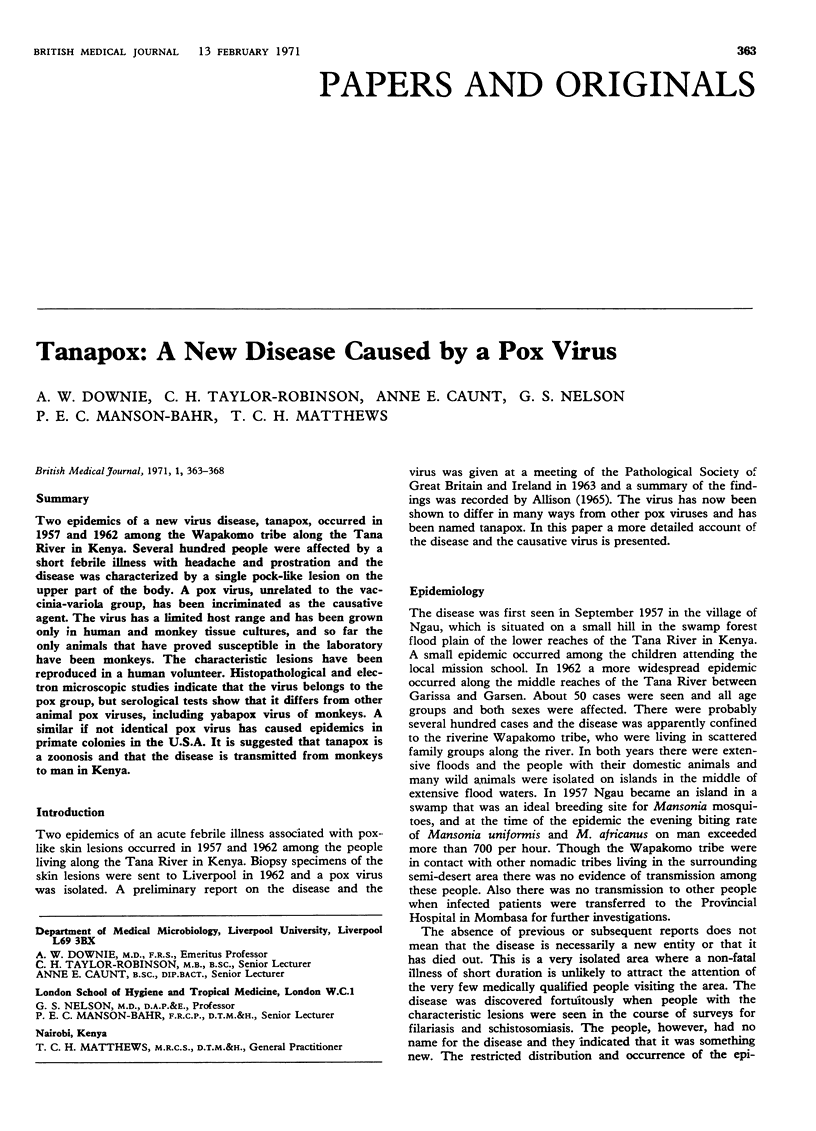
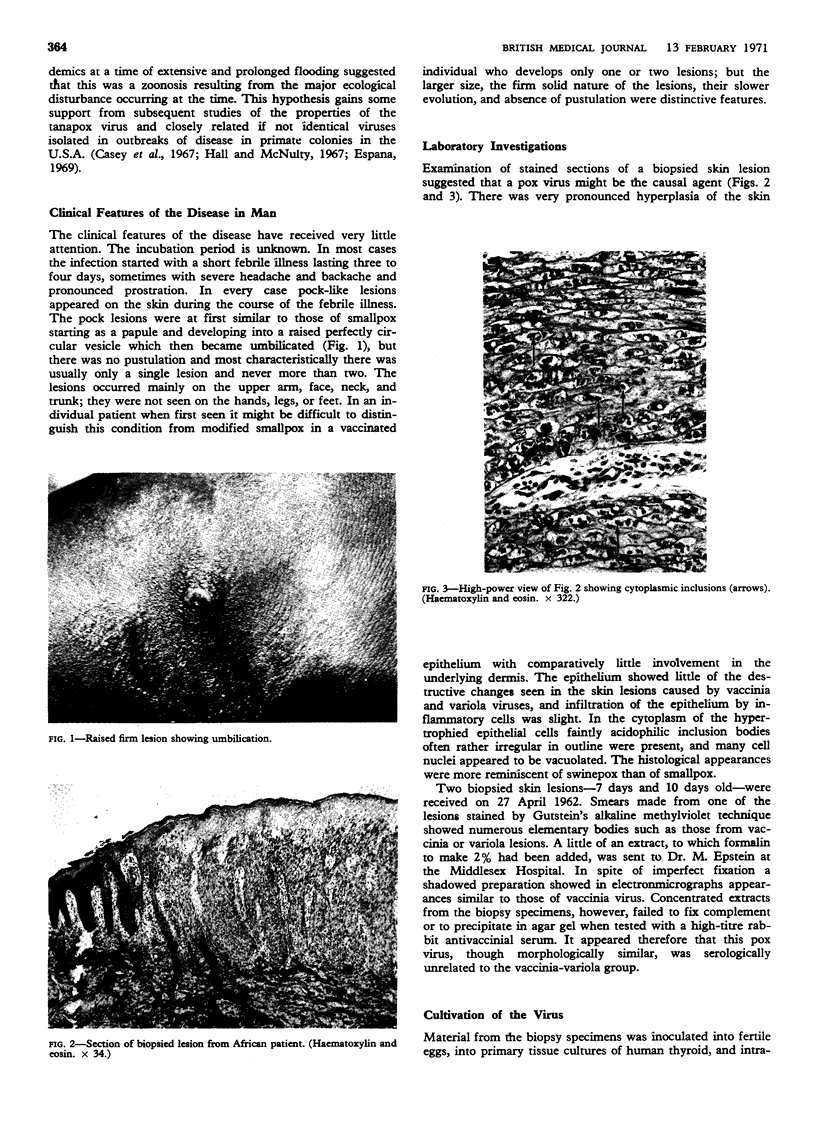
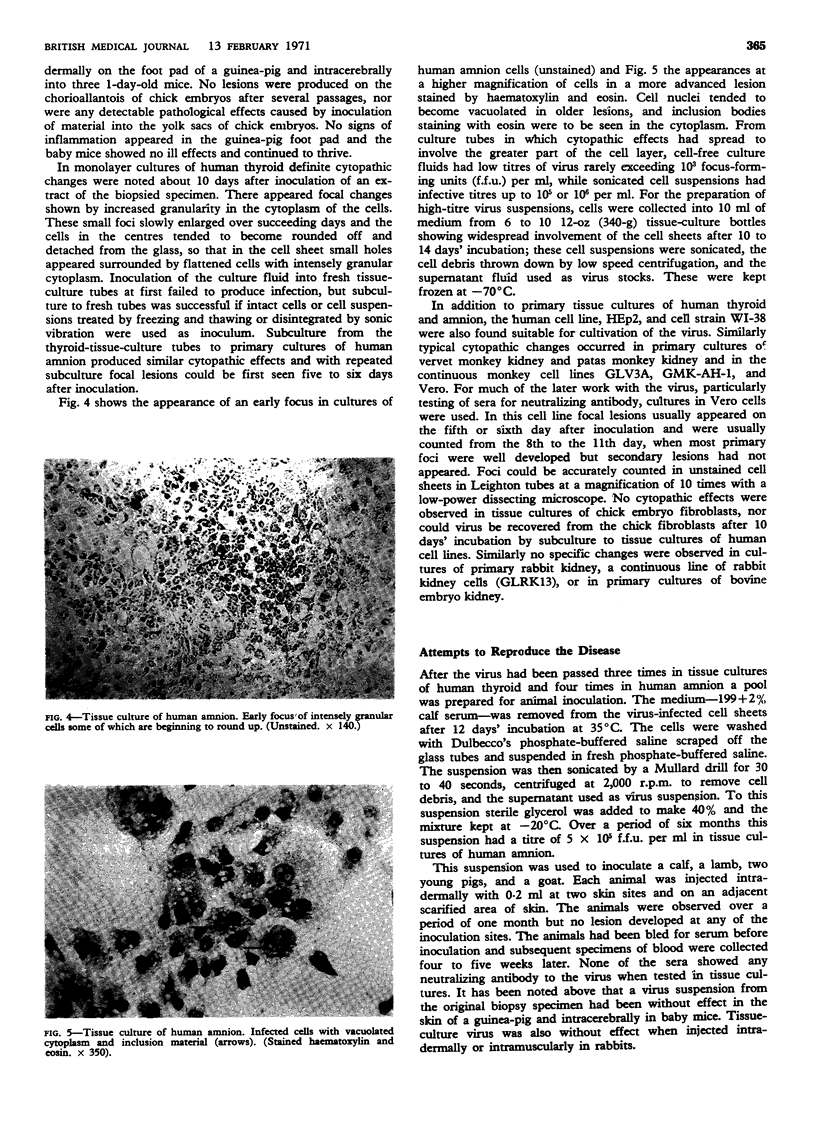
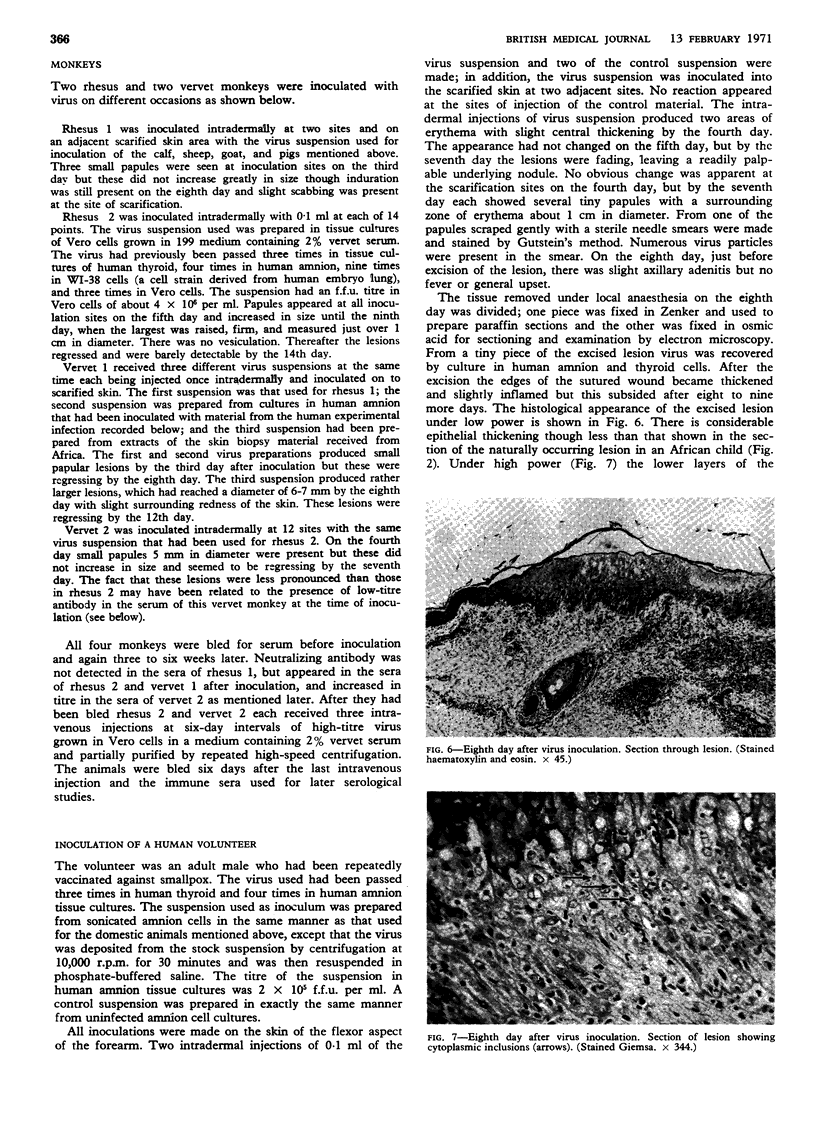
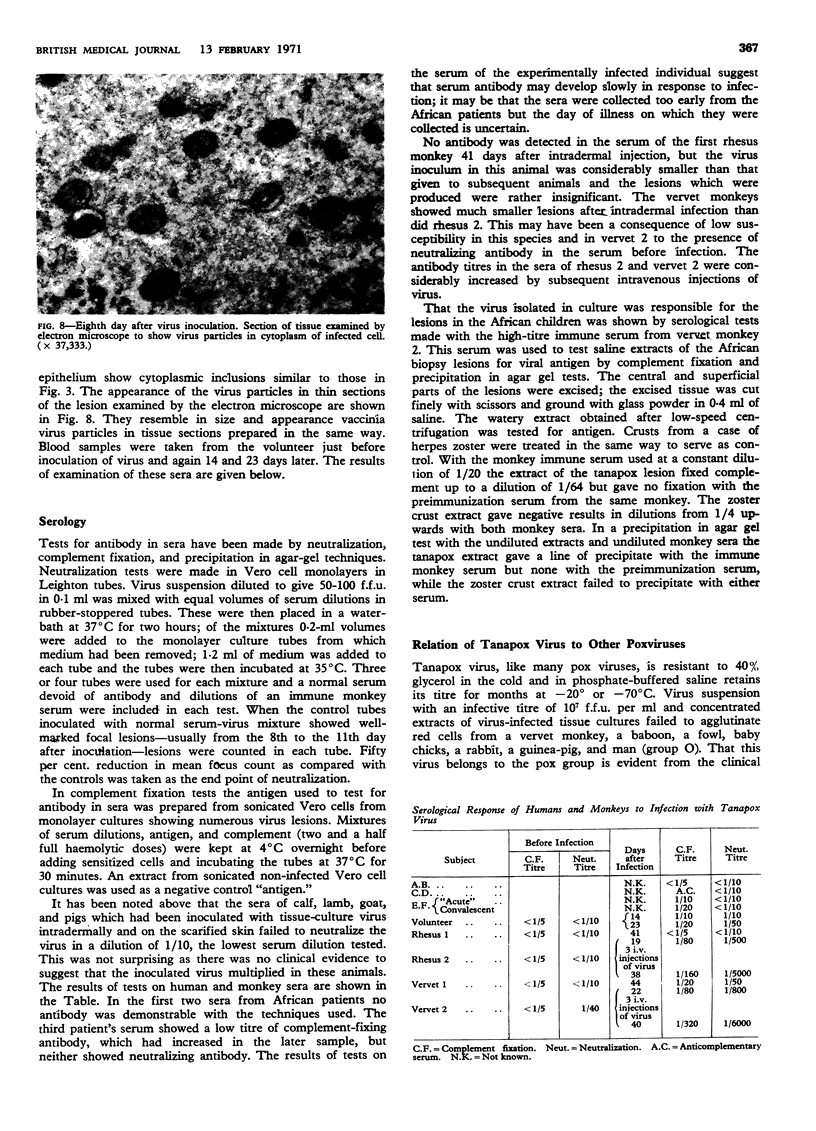
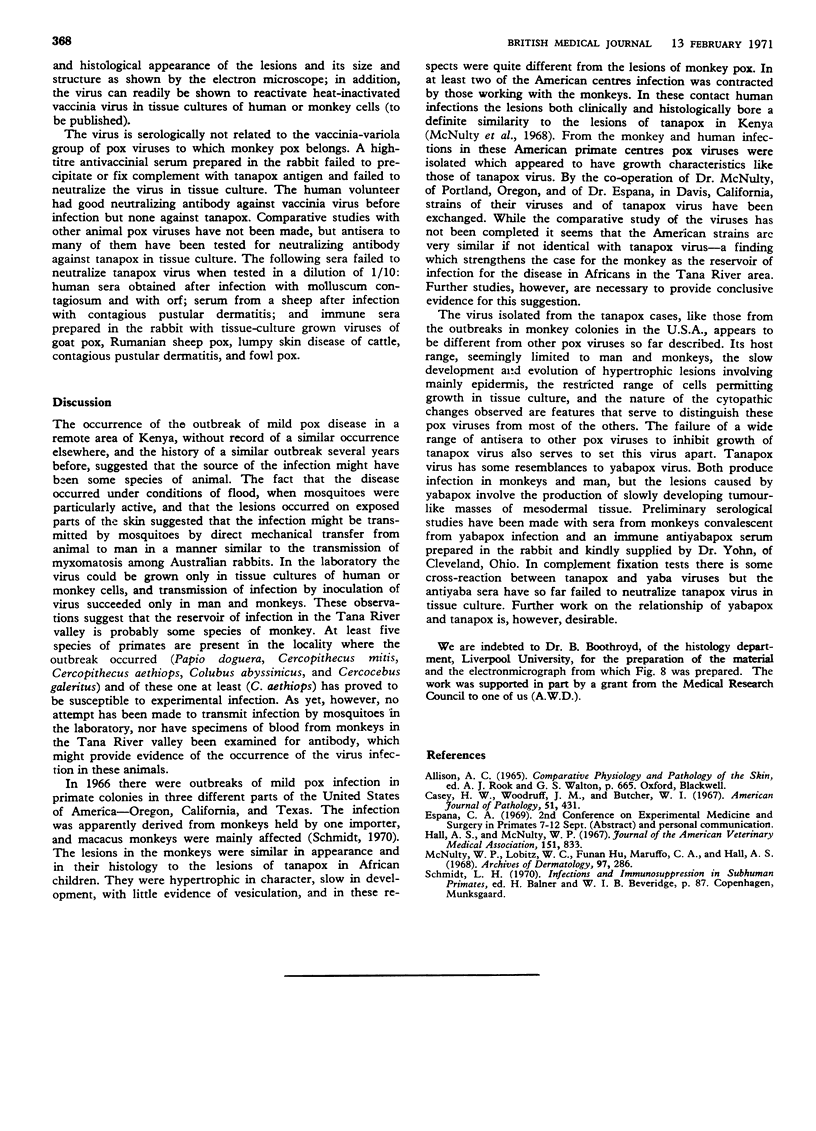
Images in this article
Selected References
These references are in PubMed. This may not be the complete list of references from this article.
- Casey H. W., Woodruff J. M., Butcher W. I. Electron microscopy of a benign epidermal pox disease of rhesus monkeys. Am J Pathol. 1967 Sep;51(3):431–446. [PMC free article] [PubMed] [Google Scholar]
- Hall A. S., McNulty W. P., Jr A contagious pox disease in monkeys. J Am Vet Med Assoc. 1967 Oct 1;151(7):833–838. [PubMed] [Google Scholar]
- McNulty W. P., Jr, Lobitz W. C., Jr, Hu F., Maruffo C. A., Hall A. S. A pox disease in monkeys transmitted to man. Clinical and histological features. Arch Dermatol. 1968 Mar;97(3):286–293. [PubMed] [Google Scholar]










